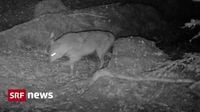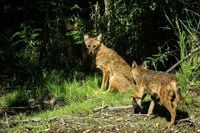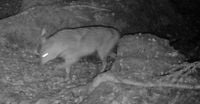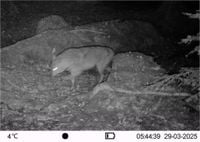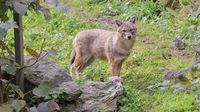In a significant ecological development, a golden jackal was caught in a camera trap between Neuenkirch and Hellbühl at the end of March 2025. This marks the first confirmed record of this species in the Canton of Lucerne, Switzerland. The golden jackal, which is protected throughout Switzerland and may not be hunted, has been migrating naturally into the country for nearly 15 years.
The golden jackal resembles a fox but is distinguishably larger, with longer legs and a shorter tail. It is significantly smaller and less robust than a wolf, making it a unique presence in the Swiss wildlife landscape. The original distribution area of the golden jackal is Southeastern Europe, and since the 1950s, the species has been expanding its range towards Central and Northern Europe.
According to the state chancellery of Lucerne, the golden jackal's detection in the region is a clear indication of its growing population in Switzerland. The first documented evidence of a golden jackal in Germany dates back to 1997, when one was sighted in Brandenburg. Since then, the species has been reported in all German federal states except for Rhineland-Palatinate, Saarland, Berlin, Bremen, and Hamburg, with increasing sightings particularly in Baden-Württemberg, where there has been annual offspring since 2021.
The golden jackal’s expansion in Switzerland is attributed to several factors, including the large-scale decimation of wolf populations in the early 20th century, climate warming, and the opening of landscapes due to human activities. These factors have created favorable conditions for the jackals to migrate and potentially establish permanent populations in lower elevations of Switzerland.
As the golden jackal continues to spread, experts anticipate that it will not only traverse Switzerland but may also settle and breed in the region. The breeding season for golden jackals occurs from late April to May, during which females can give birth to up to five pups per litter. The pups are nursed for about six weeks, after which they begin to accompany their mothers on hunts.
Interestingly, the International Jackal Day, observed on April 19, was established in 2023 by BOKU University in Vienna. This day aims to raise awareness about the increasing presence of golden jackals in Europe and to promote scientific research about this elusive canine relative. The choice of April 19 is intentional, as it coincides with the breeding period of the jackals, when the pups are born and begin their early development.
Golden jackals are known for their adaptability to various habitats, often found near water bodies where they can find ample cover and food sources. They thrive in areas with diverse structures such as hedges, open fields, and water sources, avoiding higher elevations with prolonged snow cover and intensively farmed areas lacking cover. They are also known to steer clear of regions inhabited by wolves, as they can be preyed upon by these larger canids.
The diet of golden jackals is omnivorous, similar to that of foxes, primarily consisting of smaller animals like rodents and amphibians, although they can also scavenge and consume plant matter. Remarkably, they are capable of hunting larger prey, such as deer, especially when traveling in pairs or packs.
This latest sighting of a golden jackal in Lucerne highlights not only the species' resilience but also the changing dynamics of Switzerland's wildlife. As more golden jackals establish themselves in the region, they may play an important role in the local ecosystem, contributing to the biodiversity of the area. Conservation efforts remain critical to ensuring that these animals can thrive in their new habitats without the threat of hunting or habitat loss.
As the golden jackal continues to adapt and expand its range in Switzerland, researchers and conservationists remain vigilant, monitoring their populations and understanding their behaviors. The growing presence of this species serves as a reminder of the intricate balance of ecosystems and the ongoing impact of environmental changes on wildlife.
In conclusion, the golden jackal's first confirmed presence in Lucerne represents a noteworthy moment in Swiss wildlife conservation efforts. As this species continues to adapt and thrive in new environments, it underscores the importance of protecting natural habitats and fostering biodiversity throughout the region.
